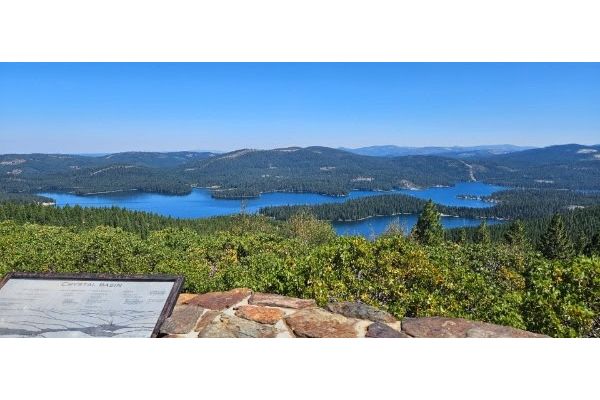California’s Sierra Nevada region is a landscape both ecologically significant and cherished for its recreational opportunities. However, decades of fire suppression have left these forests overgrown and vulnerable to catastrophic wildfire — putting wildlife, communities and clean water at risk.
Since 2017, the NWTF has worked in partnership with the El Dorado National Forest to restore forest health and conserve vital wildlife habitat through the Cleveland Icehouse Restoration Project. Over the last eight years, the project has transformed overgrown, fire-prone forests into thriving wildlife habitat — protecting clean water, bolstering biodiversity and ensuring these wild places remain open and accessible for generations to come.
This multi-phase stewardship project has already completed several phases, including Cleveland Icehouse Project (665 acres), View 88 Project (removing 5,000 tons of woody debris along Highway 88), Tobacco Gulch Project (910 acres), Trestle Project (740 acres), Twofer Project (184 acres) and the first phase of the Threefer Mastication Project (362 acres).
Now, the work continues with the next phase of the Threefer Stewardship Project, focusing on road reconstruction, thinning, mastication (or mulching) and biomass removal. Road reconstruction is currently underway to improve approximately 3 miles of road in the Threefer Project Area. This maintenance will allow for continued active forest management and is necessary for the safety of operators to conduct work in the area.
This fall, the next phase of thinning and fuels reduction will begin, targeting key areas to improve forest health and reduce wildfire risk:
- 286 acres of natural stand thinning (selectively thinning overcrowded, mature forests to promote healthy tree growth).
- 210 acres of plantation thinning (thinning trees in previously planted forests to reduce competition and support the development of strong stands).
- 29 acres of biomass removal (clearing excess dead or downed vegetation that can fuel wildfires).
- 68 acres of mastication (mechanically grinding brush and small trees into mulch to reduce hazardous fuels and improve habitat).
This work is taking place adjacent to both Icehouse Reservoir and Union Valley Reservoir, areas critical for clean water storage, abundant wildlife and outdoor recreation.
These efforts go beyond fire mitigation; they improve wildlife habitat for wildlife species — like the wild turkey, mule deer and others — while supporting the long-term health of watersheds that millions depend on. Just as importantly, they help ensure that these cherished public lands remain healthy and accessible for the next generation of outdoor recreationists.
“Growing up in the Sacramento Valley, I often spent much of my childhood in the Cleveland Icehouse Project area,” said Krista Modlin, NWTF district biologist in California, Nevada, Oregon and Washington. “My very first camping trip was at Icehouse Reservoir, and I caught my first fish there as well. It is a place where I learned to love the outdoors and my passion for wildlife. I now get to explore this area with my son Cooper!”
Each acre of work completed this year builds on nearly a decade of progress — creating healthier forests, strengthening biodiversity and improving the resilience of the land. These are the kinds of long-term investments that allow future generations to experience the life-changing power of the outdoors.
Discover how the NWTF is making a lasting impact through healthy forests and wildlife habitat, safeguarding clean water, supporting resilient communities and creating outdoor opportunities for all, visit the NWTF website here.
Read the full article here




